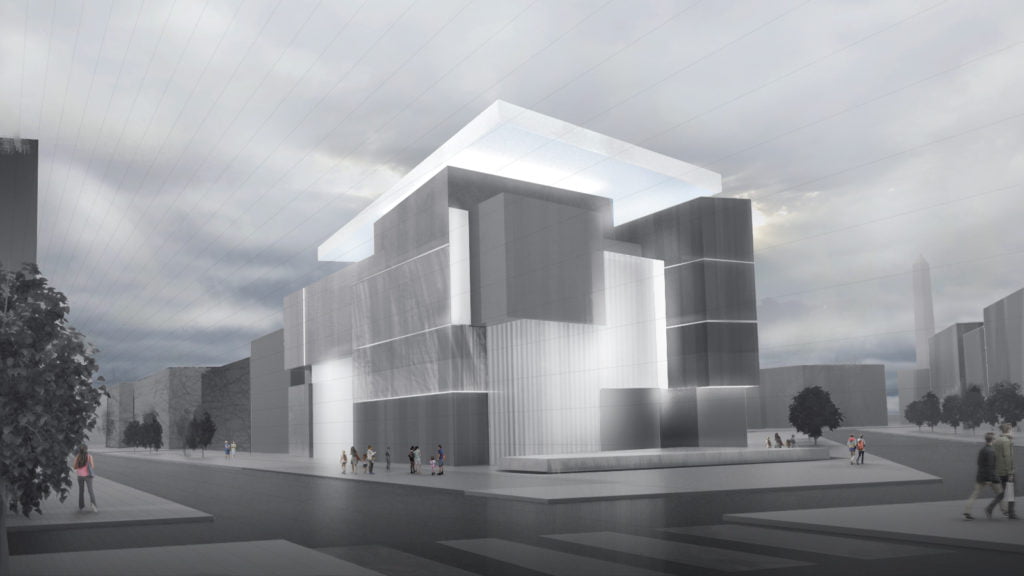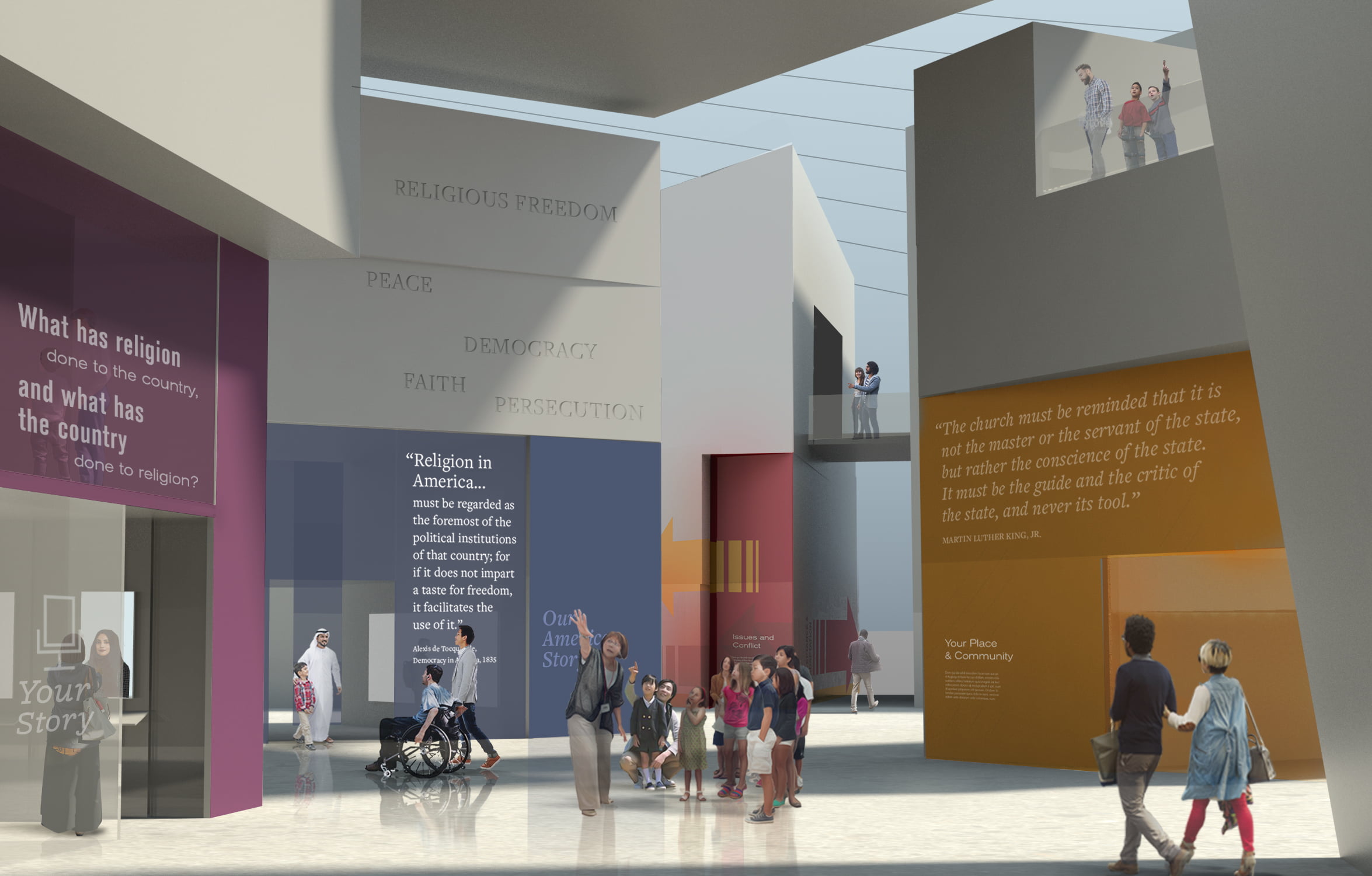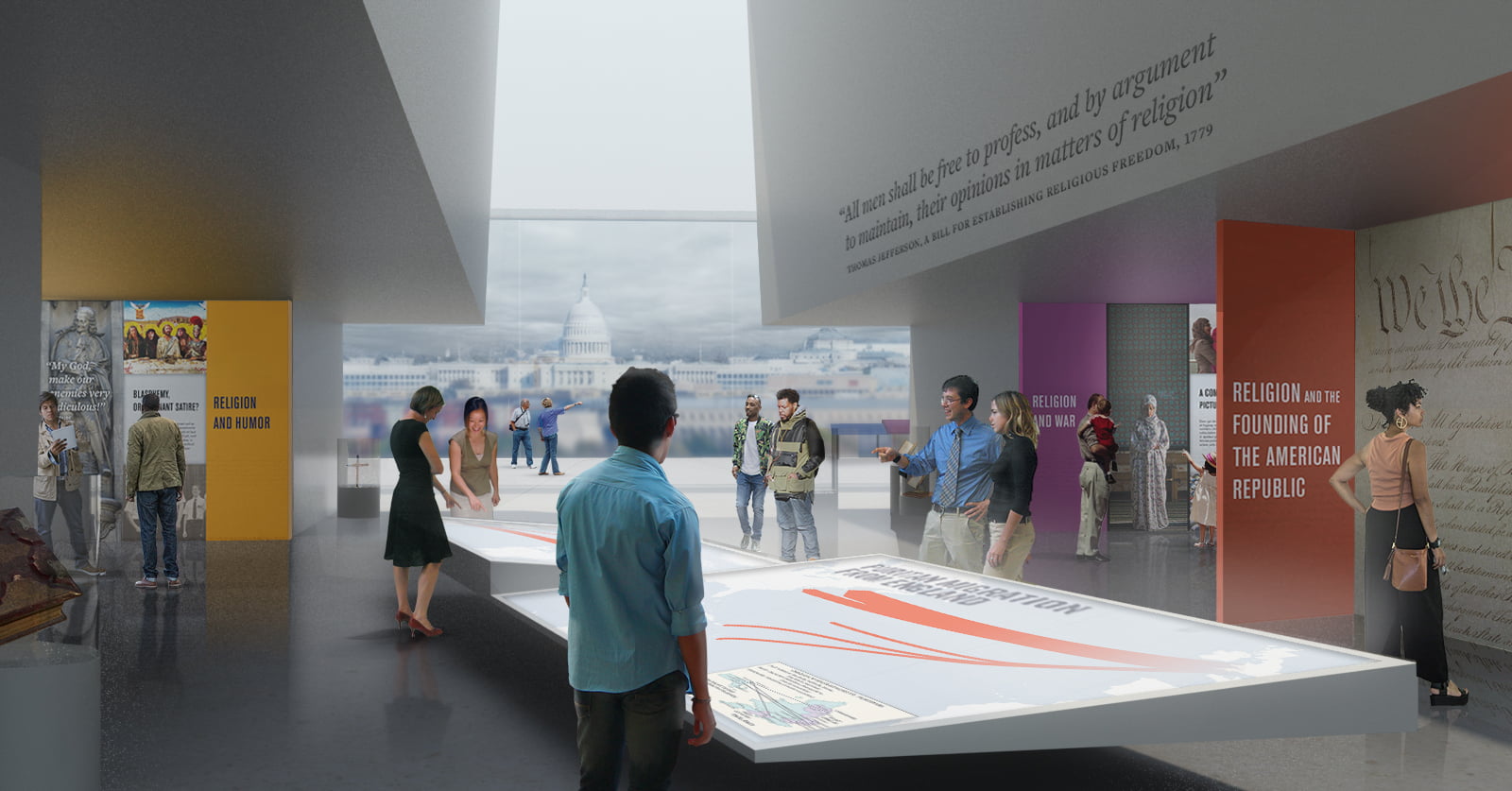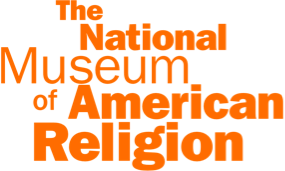Who We Are
Mission, Vision, and Values
Value Proposition
The National Museum of American Religion invites all people to be inspired by the Constitution’s bold commitment to the ideal of religious freedom and to be moved to seek its preservation for future generations.
The National Museum of American Religion will be:
- Inclusive
- Honest
- Thoughtful
- Empathetic
- Relevant
- Inspiring
- Inquisitive
- Interactive
- Committed to accessibility
- Family-centric
Mission
The National Museum of American Religion explores the impact of religion on America, and America on religion. Committed to honesty and inclusivity, it tells stories of individuals, institutions, and movements that have formed the distinctive religious history of our nation. NMAR invites all people to discover how the ideal of religious freedom, as expressed in the Constitution and experienced by people throughout United States history, has shaped our social, political, economic and cultural lives from the period before European colonization to the present day.
Vision
The National Museum of American Religion will be the nationally recognized center for presenting, interpreting, and educating the public about the impact of America’s fragile experiment with religious freedom on the United States and the lives of people who have made this country their home. It seeks to inspire civil dialogue and debates about this complex and moving story, while also challenging assumptions and understandings about religion’s impact on history and contemporary life.
The Museum
Explore the planned in-museum experience for the National Museum of American Religion in our Master Study.

Rendering of the outside of the National Museum of American Religion
The Museum will be located near the National Mall in Washington, D.C.

Rendering of the Introductory Experience to the Museum
The Museum will feature a “Recording Booth” that will be used to record and collect visitors’ reactions to exhibits and questions.

Rendering of an Interactive Exhibit
This raised digital map will show religious immigration patterns to and within the United States.
